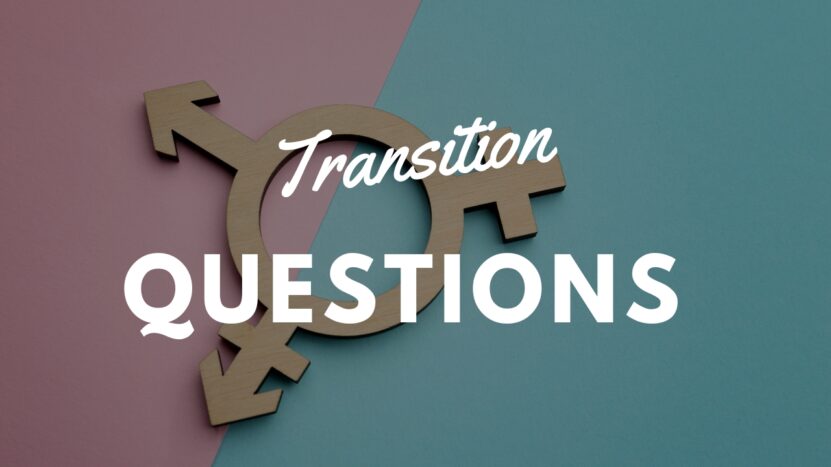As someone who has navigated the path of transition and continues to engage with the transgender community, I often find myself in conversations with individuals who are just beginning their own journeys. They reach out to me, and to us here at Point 5cc, with a myriad of questions about being transgender, the process of coming out, starting hormones, and so much more. It’s a testament to the shared experiences and common threads that run through our diverse community.
These inquiries are not just questions; they’re reflections of the hopes, fears, and uncertainties that come with embracing one’s true identity. They’re about seeking guidance and reassurance in a world that can often seem confusing and overwhelming. And they’re about finding a sense of community and belonging, knowing that you’re not alone in your journey.
1. How Do I Change My Name?
Legally changing your name is different for everyone because it depends on where you live. For U.S. residents, the best way to find out every detail of the steps you need to take to change your name would be to contact your county clerk’s office.
Your county clerk’s office should be able to inform you of any paperwork or court attendance. Some states and counties require you to appear before a judge, others don’t. You may also be required to publish notice of your change in a newspaper or bulletin. Also, ask if they are aware of the fees associated with a name change. It’s safe to assume there will be fees to obtain official certified name change records, which you will need to update your other legal documents.
Generally, you fill out a petition for change of name. If you have to appear in court, you’ll choose a date (which may be several weeks out, so plan in advance). You may have to fill out some pre-hearing documents as well, which may ask for old and new names, address, length of state residency, etc.
If money is an issue, there are a number of transgender name change clinics such as TLDEF’s Name Change Project across the nation where professionals provide name change services for free. Check to see if your area has something similar.
The Name Change Checklist (again, check with your local county clerk’s office!)
- Completed petition and copies
- Money for legal notice publication if applicable
- Notarized affidavits acknowledging birth name
- Proof of legal notice publication
- Money for court costs
- Photo identification with old name
- Letter from your therapist/medical professional (helpful to have just in case)
2. What Kind of Binder Should I Get?/What Kind of Breast Forms Should I Get?

Binders: Binding is a great way to reduce chest dysphoria and become more comfortable with your body (as long as you follow our tips on binding safely of course!). Point 5cc recommends GC2B.co Binder Company. You can feel good supporting them because they make great, high-quality binders sized XXS-4XL and because they are the proud sponsor of Point 5cc’s Chest Binder Donation Program. GC2B.co helps us to in turn help FTMs have access to free, safe binding garments. You can check out their Instagram for customer reviews, and check out the site for any sizing questions.
Breast Forms: The most common types of breast forms are silicone inserts that you wear inside a regular bra, but there are a wide variety of breast form styles available. Some are specially made for sleep or travel, some are self-adhering or come with an adhesive back (which means you could even go braless), some come in flesh tones – and, of course, they come in all different sizes. The Breast Form Store, which is dedicated to the transgender community, has a huge variety of products to choose from at all different price ranges.
Many folks are surprised that breast forms are pretty expensive, so if you are looking for a cheaper alternative, consider a DIY approach. Some women have used Play-Doh in pantyhose or water in balloons as an alternative. Then, just make sure you know your correct bra size so you are most comfortable and look your best!
3. How Long Will It Take for Me to Grow a Beard?

Some trans guys on testosterone see beard growth almost immediately, while others can go years without a bit of fuzz. It all boils down to genetics. If the men on both sides of your family have a lot of facial hair, chances are you will with time and HRT, too. Hair growth speed varies wildly from person to person, trans or cis. For most guys already growing facial hair, stop shaving and you should get a decent beard in about 4-6 weeks.
Want to learn more? We actually wrote a whole blog post just about this topic: A Trans Guy’s Guide to Beards
4. Do You Have to Take HRT for The Rest of Your Life?
For both trans men and trans women, hormone replacement therapy (HRT) is currently a lifelong commitment. Medical technology is always increasing, so this might change in the future. Educating yourself about the various types of HRT, using an accredited doctor, and taking your hormones at their prescribed doses is the best and safest way to physically transition.
HRT can take many forms – some trans women opt to take daily doses of hormones in pill form, while others inject hormones intramuscularly. Some trans men prefer patches or gels. Injections can be done weekly or every other week, or there are also surgical implants available for replacement every couple of months. So while it is a lifelong commitment, you do have some options about the types and frequency of your hormones.
5. Will I Get Taller on HRT?

It depends. If you begin taking testosterone before your puberty ends (so, for most folks, your teen years), you might get taller. If you start HRT after that, you won’t have a significant height change.
The reason for this is that at the end of your first puberty, your bones stop growing and your growth plates fuse. They can thicken as you age, which might cause a slight change in height.
But you still may notice a change in height unrelated to hormones! That’s because many guys say their posture improves as they transition: as they get more comfortable with their body, they stand straighter and taller. For guys who’ve had top surgery, many self report that they stood up taller because they were more comfortable and no longer worried about hiding their chest.
Final Words
In conclusion, the journey of transition is deeply personal and unique to each individual. It’s a path filled with questions, discoveries, and profound transformations. While the questions we’ve addressed here are common, remember that there are no one-size-fits-all answers. Each person’s experience is shaped by their own circumstances, needs, and desires.
What’s most important is that you stay true to yourself, seek out reliable information, and make decisions that prioritize your health and well-being. Remember, you’re not alone in this journey. There’s a whole community here at Point 5cc and beyond that’s ready to offer support, share experiences, and walk this path with you.
In an enlightening exploration of the transgender flag’s rich history, origins, profound meaning, and remarkable evolution, we delve deep into the untold story that unveils a captivating journey.

